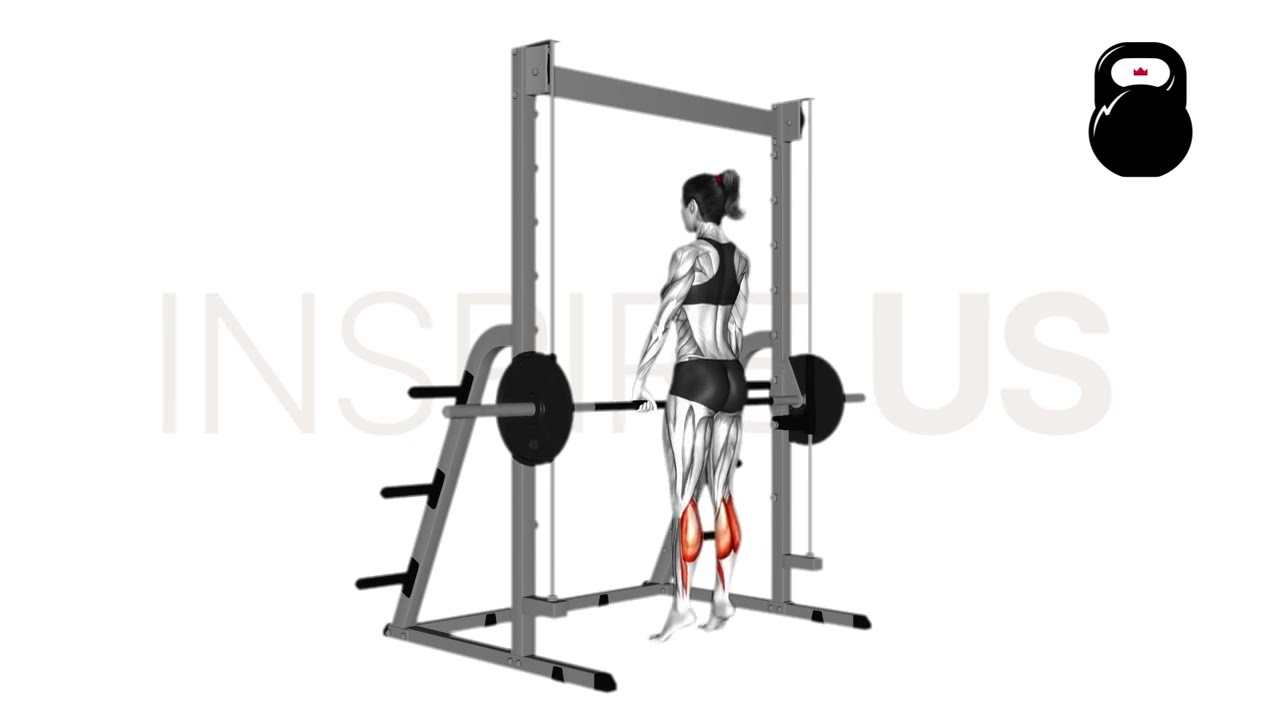Smith Machine Calf Raise: Benefits, Muscles Worked, and More
As its name implies, smith machine calf raises are simply conventional calf raises performed with the additional load of a smith machine.
This helps reduce the risk of the lifter losing balance and can allow for significant development of the calf muscles in a safe and highly convenient manner.
What is a Smith Machine Calf Raise?
Smith machine calf raises are a machine-based isolation exercise involving ankle extension and foot plantarflexion for the purposes of strength, mass and mobility development in the calves.
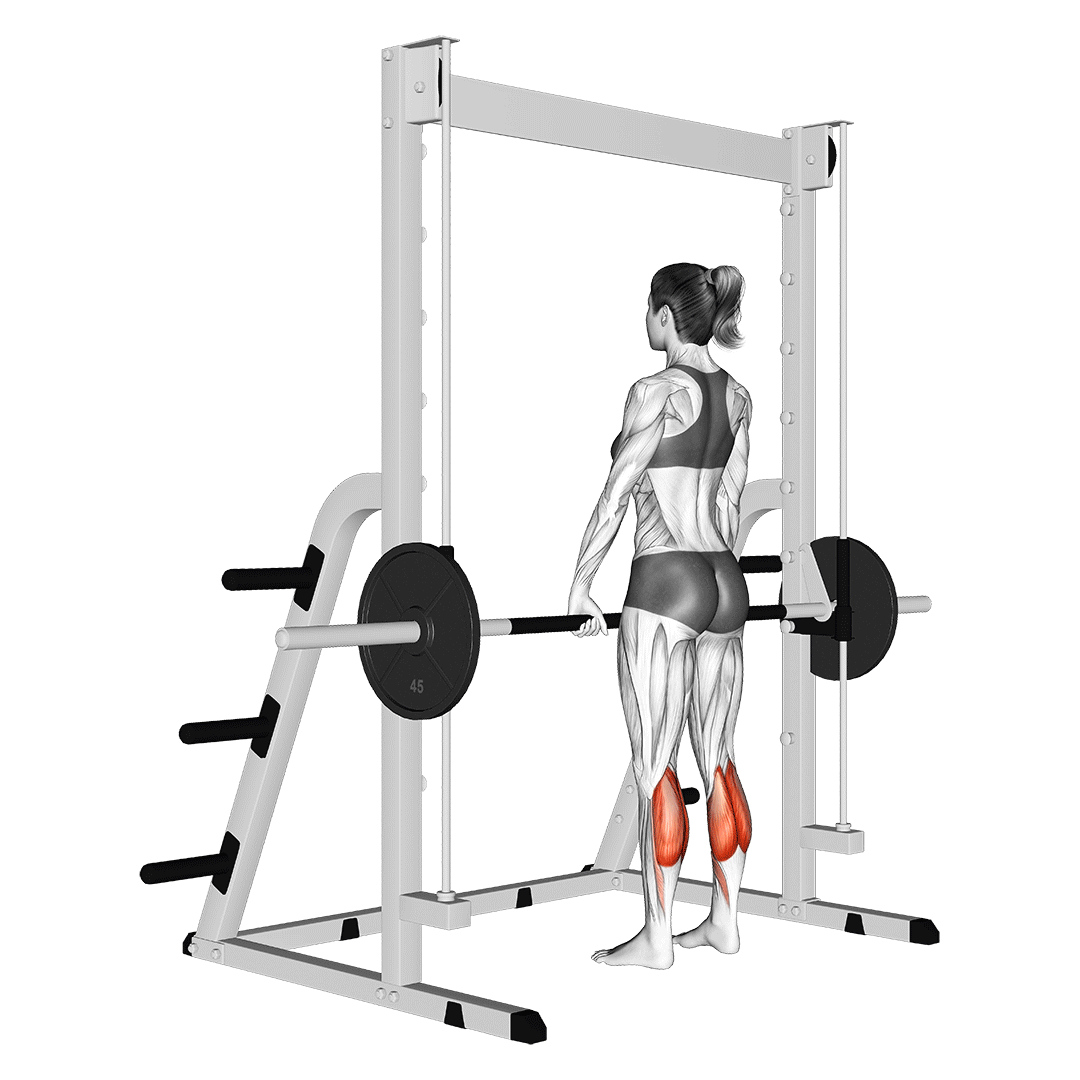
Because of their rather small scope of muscular recruitment, the smith machine calf raise is primarily used as an accessory movement near the end of a lower body workout.
Even outside of strength or bodybuilding training programs, the calf raise is employed for its benefits relating to overall lower body stability and movement. Most frequently, runners and similar types of athletes will strengthen their calves through this exercise to improve their force output off the ground.
To get the largest range of motion out of the exercise, lifters will intentionally elevate their forefoot off the ground with an aerobic stepper or pair of weight plates as the exercise is performed.
Are Smith Machine Calf Raises Right for You?
Smith machine calf raises are safe, simple and quite effective. Even complete novices will be able to do them without much effort.
Despite this, if you have a history of issues relating to the spine, ankles, feet or knees, it may be best to first speak to a physician prior to attempting smith machine calf raises. The exercise involves vertical loading atop the back, causing downward pressure through the spine, hips and knees.
How to do Calf Raises on the Smith Machine
To perform a set of calf raises with the smith machine, the lifter will first place a block or similarly elevated platform beneath the bar, loading it with a light amount of weight.
The bar should be racked near the back of the shoulders as closely as the machine pegs allow - ideally with it resting atop their trapezius, even with the safeties engaged.
Standing atop the elevated platform and allowing the heels to hang off the edge, the lifter then disengages the smith machine’s safeties by raising the bar slightly and rotating it backwards, keeping the bar atop their back as they do so.
Slowly lowering the heels until reaching the limits of their range of motion, the lifter then squeezes their calves and drives their forefeet into the platform, causing their heels to raise higher than their toes.
With the ankles fully extended and the calves fully contracted, the lifter once again lowers their heels back down to the limits of their mobility - thereby completing the repetition.
Sets and Reps Recommendation:
The calves are a muscle best developed through high volume.
Regardless of whether seeking hypertrophy, endurance or strength, 3-4 sets of 12-20 repetitions is a good starting point.
What Muscles do Smith Machine Calf Raises Work?
The majority of calf raise variations (smith machine included) are isolation exercises, essentially meaning they only truly target a single muscle group.
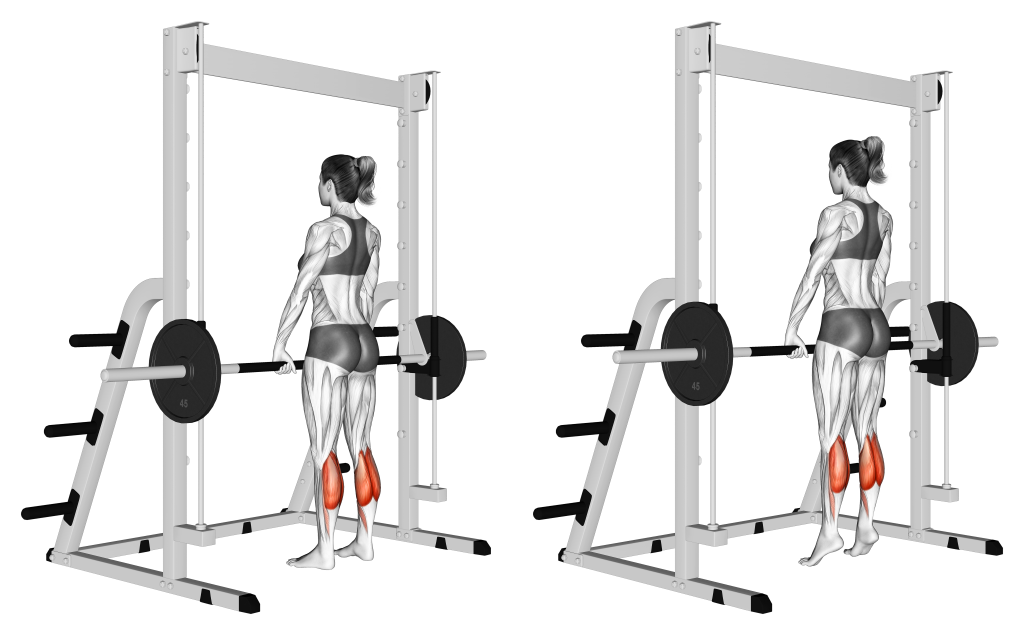
This, of course, is the calves muscle group, of which is composed of the more superficial gastrocnemius and the underlying soleus muscle. The calf muscle group is otherwise also referred to as the triceps surae trio.
These muscles are responsible for plantar flexion and both insert at the heel of the human foot - hence their high volume requirements for growth considering the amount of contraction an ordinary day of walking around involves.
What are the Benefits of Doing Smith Machine Calf Raises?
Smith machine calf raises are often preferred over their bodyweight counterpart for the following advantages.
Perfect for Isolating the Calves for Strength and Mass
The smith machine calf raise is practically the only exercise you need for developing strength and muscle mass in the calf muscles.
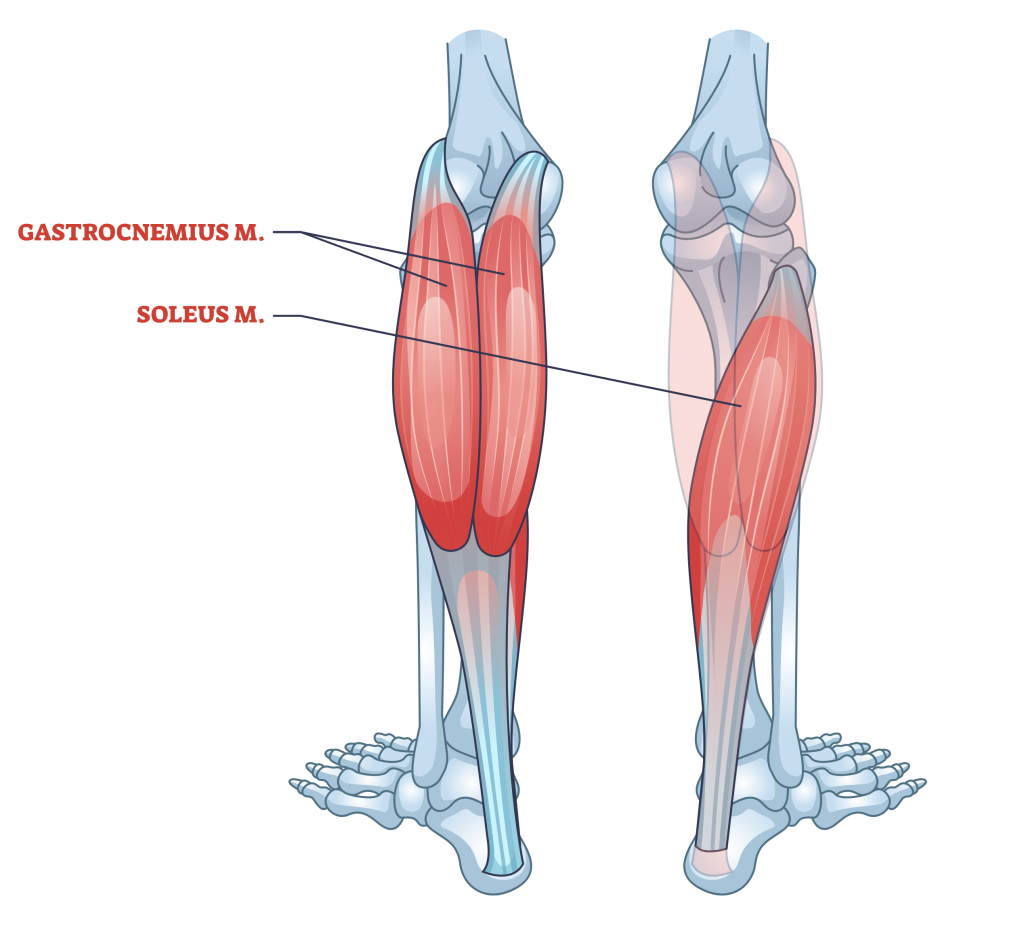
Because of the muscle group’s relatively short range of motion and few biomechanical actions, so long as intensity is kept high, smith machine calf raises are more than enough to get big and strong calf muscles.
Of course, if training for a specific sport or for muscular endurance in the calves, the law of specificity may instead call for you to perform less resistance-focused forms of training instead.
Low Risk of Injury, Simplistic and Prevents Loss of Balance
Because of the various aspects built into the smith machine itself, performing calf raises with its aid is considerably safer and simpler than doing so with a barbell or cable machine.
This can make the exercise wholly more newbie-friendly, allowing novices or those with difficulty balancing during regular calf raises to still train their calves in an effective manner.
Allows for Large Range of Motion
Although a benefit more unique to elevated calf raises rather than just the smith machine - placing the balls of the feet atop an elevated platform (as is convention for smith machine calf raises) helps truly maximize the length of the calf muscles at the start of the repetition.
When muscles are contracted from a stretched position while under load, the hypertrophic response is markedly greater.
Apart from allowing for a larger range of motion and longer time under tension, the greatest amount of microtears occurs while the muscle is in this state - microtears needed for signaling for the development of greater muscle mass.
Fixed Bar Path, Built-In Safety Mechanisms and Easy to Modify
The low risk of injury, high level of safety and ease with which the smith machine calf raise is performed is primarily due to the characteristics inherent to most smith machines themselves.
First is the fact that the par is fixed into a specific vertical path, preventing the lifter from losing their balance or dropping the bar.
In addition to these are the slightly angled support bars that hold the bar in place - allowing for less discomfort as the bar rests atop the back.
Alongside the simple mechanism (roll the bar forwards) with which acts as the main safeguard, these functions ensure that the smith machine calf raise does not result in acute injury outside of those caused by poor programming or excessive load.
Common Smith Machine Calf Raise Mistakes to Avoid
Although the smith machine itself is quite safe when the right exercises are performed, avoid the following mistakes to get the most out of your calf raises.
Using Excessive Momentum
As is often the case with any other exercise; bouncing, jerking or otherwise creating momentum other than a steady directional force by the primary mover muscles can easily result in injury.
Not only that, but performing calf raises in this way will greatly reduce how well the muscle responds to the exercise as less tension will be present.
Poor Range of Motion
The main benefit to performing calf raises with the balls of the feet elevated off the ground is a larger range of motion.
Failing to complete a full range of motion will often lead to the development of sticking points, instability and overall worse muscular response to the exercise.
Aim to start and end each repetition with the heels at a lower elevation than the forefeet - and to extend the ankles and feet as high as possible so that the calves are fully concentrically contracted.
Bending the Knees
In order to prevent the shin tendons from tearing or accidentally contracting the hamstrings, lifters should seek to perform all forms of standing calf raise with the knees fully extended.
This better distributes load to the calves, creates a more advantageous positioning for the muscles themselves and ensures that they are contracted in isolation.
Stance Too Wide
The majority of lifters performing standing calf raises will find a narrow stance to be more conducive to proper calf muscle contraction.
An excessively wide or outwards stance may make targeting the gastrocnemius difficult, leading to weaker force output and a significant risk of dangerous ankle eversion.
Our advice is to experiment with stance widths ranging from heels-together to just within shoulder-width apart, finding what foot positioning is most comfortable for your mobility and proportions.
Heels Touching Floor
During a repetition of the smith machine calf raise, the heel must remain suspended in the air throughout the entire movement pattern.
If they happen to touch the floor, it is possible that the platform is simply not elevated high enough to accommodate the lifter’s range of motion.
Placing weight plates beneath the platform may help, so long as the entire structure remains stable.
Variations and Alternatives to the Smith Machine Calf Raise
If the smith machine is occupied or if you find its fixed path to be too limiting - try the following substitute exercises instead.
Calf Raise Machine
The calf raise machine is a dedicated piece of training equipment specific to performing calf raises itself.
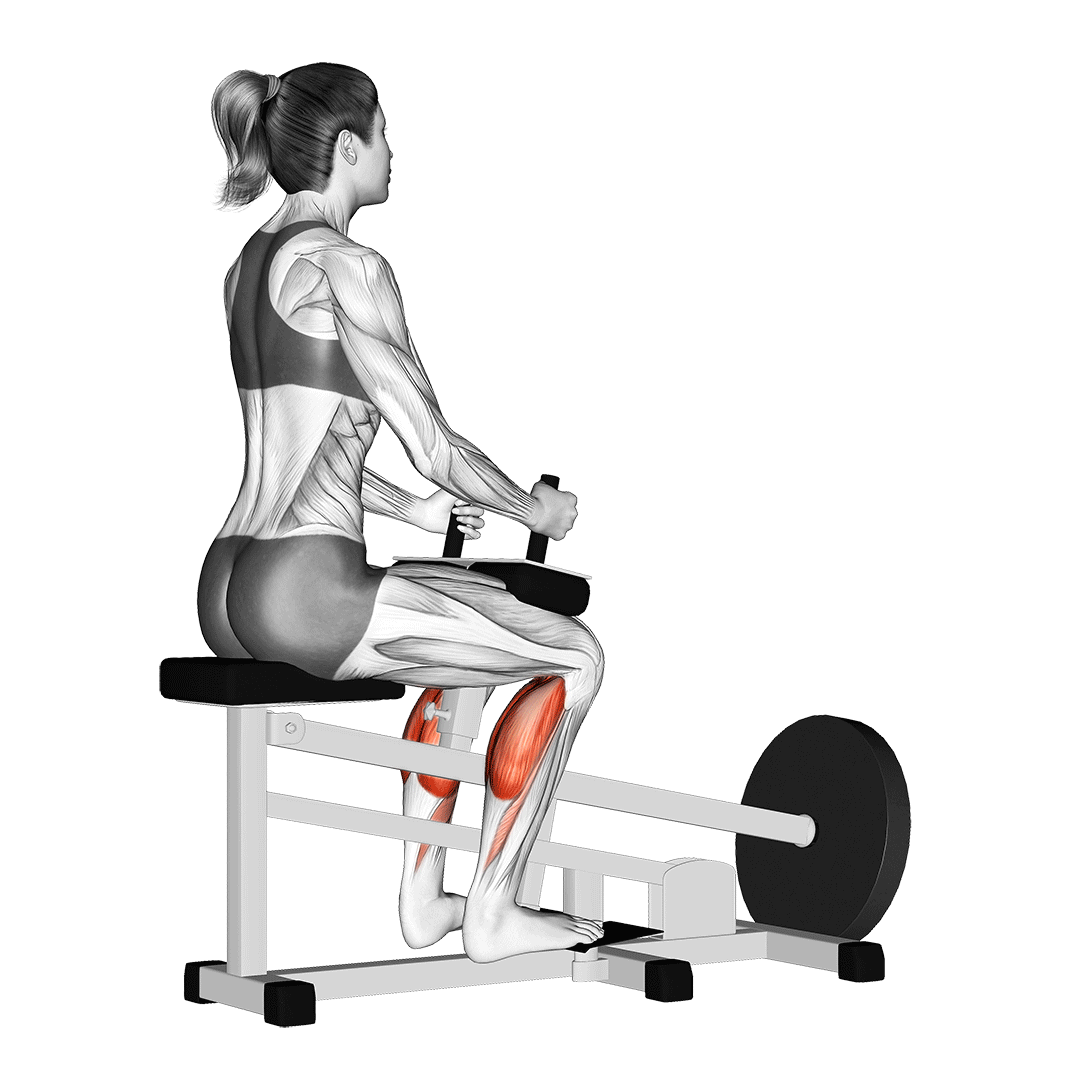
Unlike a smith machine, the majority of calf raise machines will involve a seated position and load the calves from directly atop the knees. These advantages allow lifters who cannot load their spine to still train their calves without risking injury.
Shin Raises/Tibialis Raises
Shin raises are the antagonistic exercise to calf raises, where the muscles along the front of the shins (tibialis anterior and similar) are worked through dorsiflexion against resistance.
Because training these muscles is quite difficult with a vertical angle of resistance, the majority of lifters will perform shin raises with the use of a cable machine or resistance band as they remain in a seated position.
Although less effective from a strength or bodybuilding perspective, shin raises are frequently used by sprinters, climbers and physical rehabilitation patients to strengthen the front of the shins and correct issues like foot drop or shin splints.
Leg Press Calf Raises
Finally - if no smith machine is available, it is possible to get quite a similar workout with the use of a leg press instead.
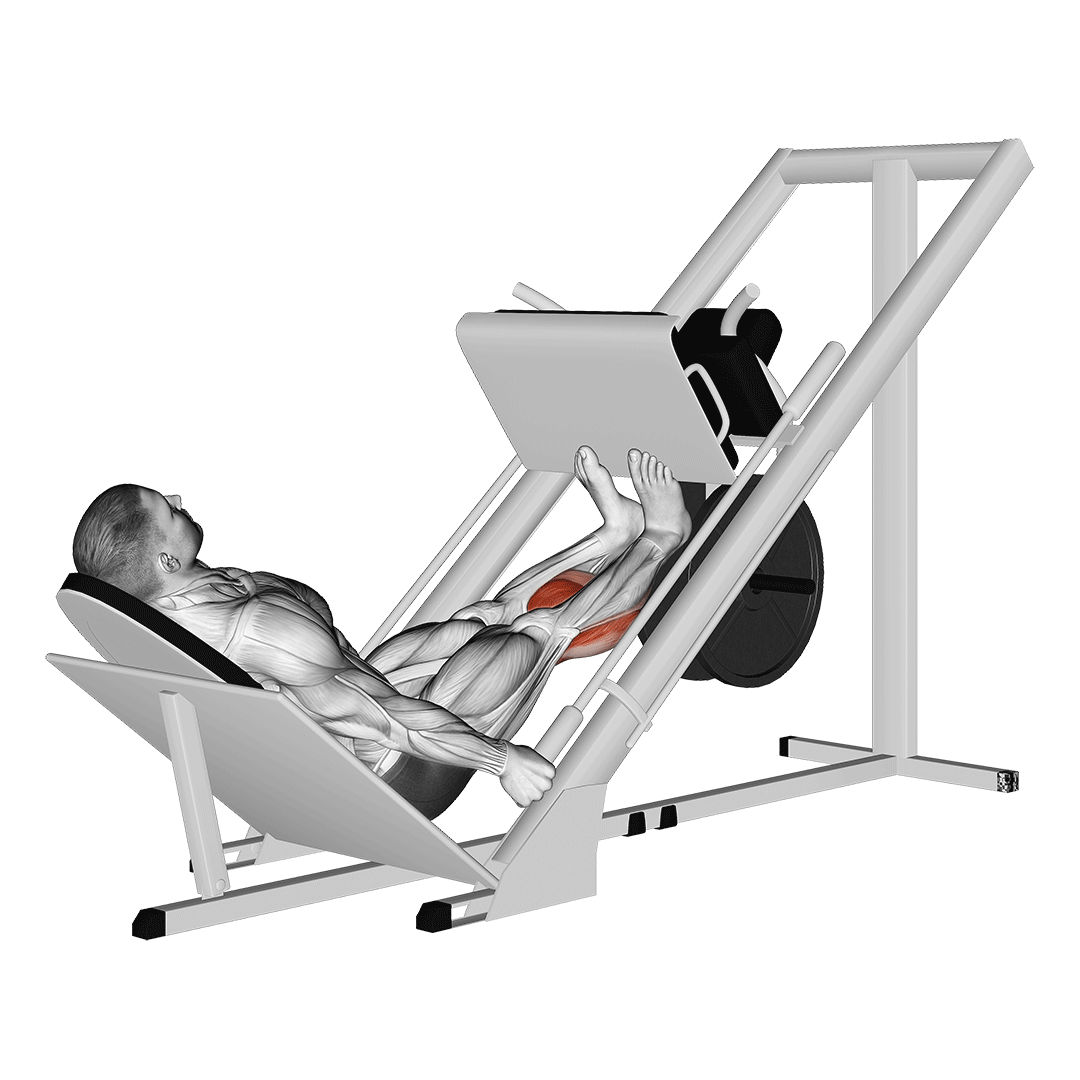
Rather than performing the exercise with the heels elevated in a standing position, the leg press calf raise instead calls for the heels to hang off the edge of the sled as the resistance pulls the balls of the feet towards the lifter.
From this position, they simply contract their calves and press through their forefeet to perform the exercise.
Leg press calf raises are best used when the lifter wishes to avoid compressing their spine through loading the back, or if they wish to train the calves outside of a standing position.
Frequently Asked Questions (FAQ)
What Machine is Best for Calf Raises?
As much as possible, aim to perform calf raises with their own namesake machine.
Leg press, smith machine and free weight calf raises all come with their own disadvantages inherent to the equipment itself. Calf raise machines don’t present the same disadvantages.
How Heavy Should My Calf Raises be?
Ideally, as light as possible without sacrificing training intensity. Seek to load an amount of weight that allows for you to perform 10 or so repetitions while still being a ways off from complete muscular fatigue.
Do Calf Raises Need to be Heavy?
Not at all. In fact, because of their positioning and composition, calves respond far better to higher amounts of volume, rather than significant amounts of weight. Not only will training in this way result in slightly better hypertrophy, but it will be considerably safer to boot.
References
1. Schoenfeld BJ, Vigotsky AD, Grgic J, Haun C, Contreras B, Delcastillo K, Francis A, Cote G, Alto A. Do the anatomical and physiological properties of a muscle determine its adaptive response to different loading protocols? Physiol Rep. 2020 May;8(9):e14427. doi: 10.14814/phy2.14427. PMID: 32342648; PMCID: PMC7186566.
2. Hasani, Fatmah & Haines, Terry & Munteanu, Shannon & Vicenzino, Bill & Malliaras, Peter. (2020). Efficacy of different load intensity and time-under-tension calf loading protocols for Achilles tendinopathy (the LOADIT trial): protocol for a randomised pilot study. Pilot and Feasibility Studies. 6. 10.1186/s40814-020-00639-5.
3. Gentil P, Souza D, Santana M, Alves RR, Campos MH, Pinto R, Bottaro M. Multi- and Single-Joint Resistance Exercises Promote Similar Plantar Flexor Activation in Resistance Trained Men. Int J Environ Res Public Health. 2020 Dec 18;17(24):9487. doi: 10.3390/ijerph17249487. PMID: 33352879; PMCID: PMC7765981.

